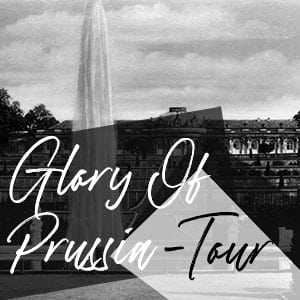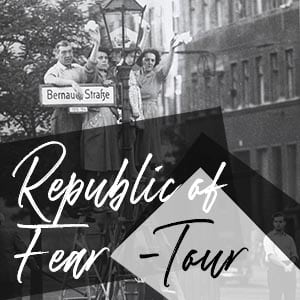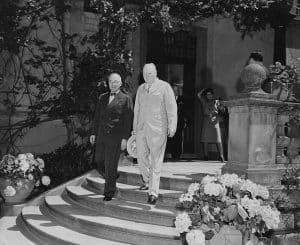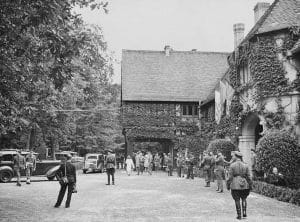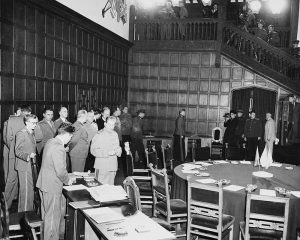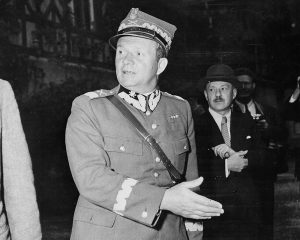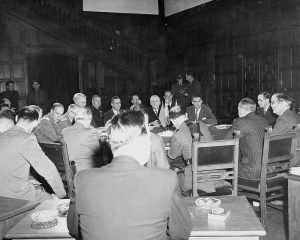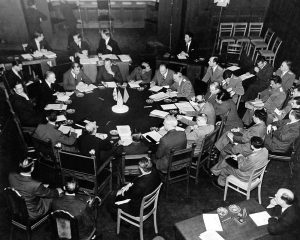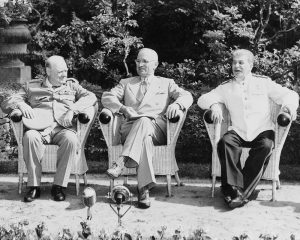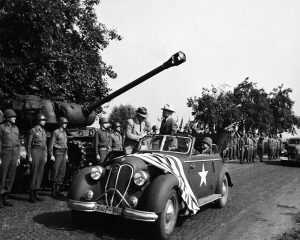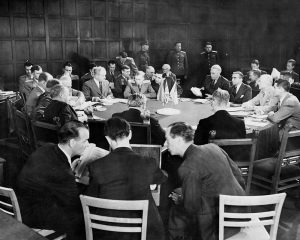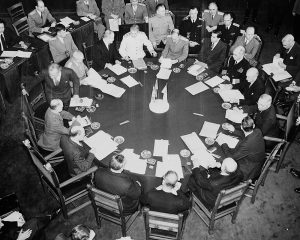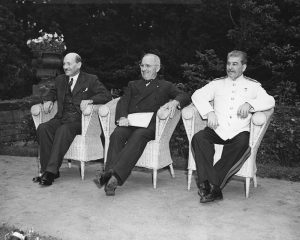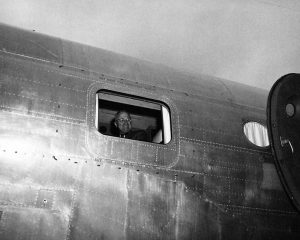At the beginning of WWI, Japan captured the island of Tinian, located around 1,500 miles south of its mainland, and gained formal control of it in 1918.
Prior to that, Spain had colonized the island in the late 17th century before selling it to the German Empire in 1889. Even though Germany had administered the island, there was never a real attempt to develop or settle it, so it mostly remained under the control of its Spanish and native landowners.
Japan only realized in the later stages of WWII that the United States could take advantage of Trinian’s strategic importance for making future attacks on its mainland. Therefore, they eventually set up an approximately 8,000 man defense garrison around the island; and as predicted, just months later, the United States launched an attack on the island on July 24th 1944.
After eight days of battle, the United States 2nd and 4th Marine Divisions, the 147th Infantry Regiment and three Underwater Demolition Teams (UDT) destroyed the garrison and took control of Tinian. Work immediately began thereafter on constructing a massive air base that would take up close to the entire surface of the approximately 40 square mile island.
While the air base was being constructed, the Americans interestingly created a ‘mini-Manhattan’ of sorts by laying out the base in a pattern of city streets resembling New York City’s Manhattan Island given its somewhat north to south topographic resemblance (not so much its east and west). Its ‘new’ streets were named accordingly: 8th Avenue, Broadway, 86th Street, Riverside Drive, West End Avenue, Lenox Avenue, Central Park, and Greenwich Village were all used as names for the island’s new design. As a matter of fact, the former island’s city of Sunharon was nicknamed “The Village” because its location corresponded to that of Greenwich Village in New York.
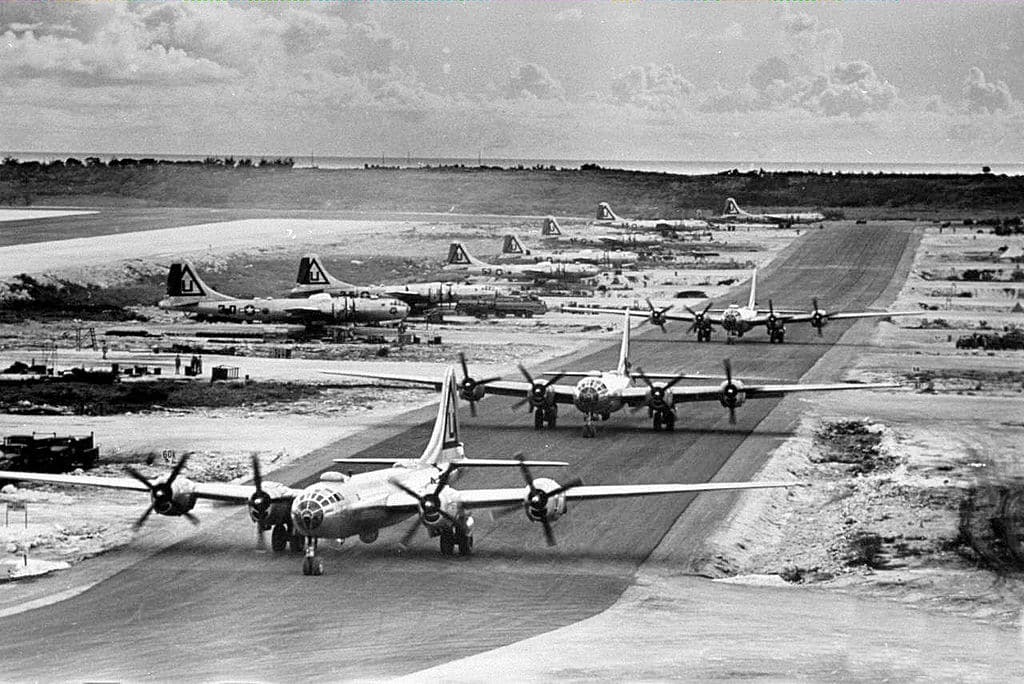
Tinian Island would serve as a critical staging base for continuous bombing attacks on Japan and its surrounding islands all the way up to the very end of WWII.
It was on this morning that the USS cruiser Indianapolis delivered an atomic bomb 10 feet long and 1 foot wide, weighing 9,700 pounds and filled with 141 pounds of Uranium-235.
It was nicknamed “Little Boy” and was unloaded and kept near Tinian’s new ‘Broadway’ street, waiting for President Truman to give its final order to be released.
–
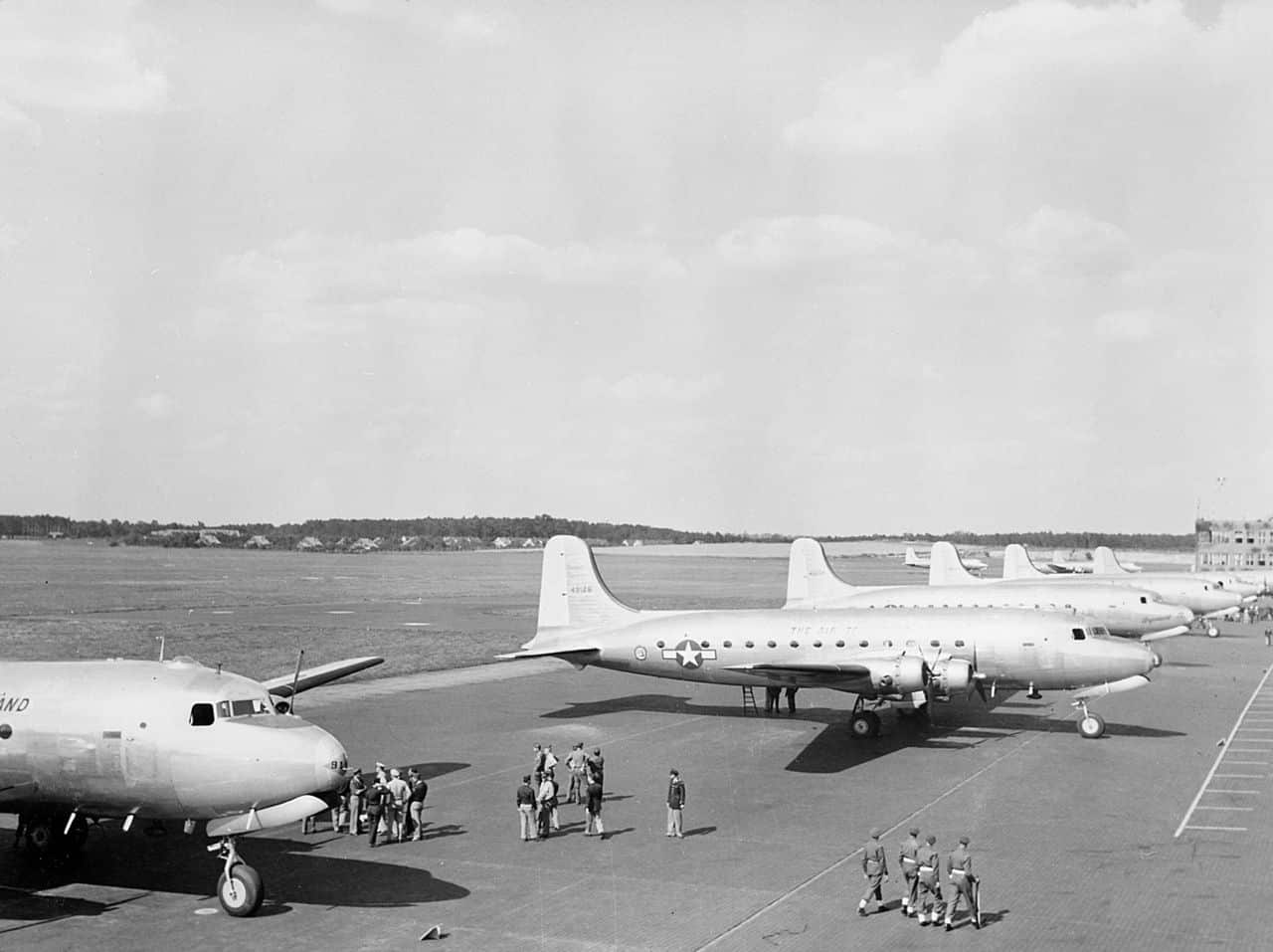
With the Potsdam Conference put on hold while the British Delegation was back in London, there would be no official negotiations or plenary session held today.
But President Truman got up early as usual and boarded his presidential airplane, the ‘Sacred Cow’, after breakfast. He and his delegation were headed to Frankfurt for the day. Traveling with the President was his close advisor and personal friend Harry Vaughn, and another close friend from Missouri, Fred Canfil. Following the ‘Sacred Cow’ was another plane flying Secretary Byrnes and his staff, while a third plane flew members of the press who had been covering the American delegation’s time in Germany.
When he touched down at the United States Army airfield in Frankfurt, Supreme Allied Commander General Dwight Eisenhower greeted the President along with an honor guard from the 508th Parachute Infantry.
Army units had lined the roadways for over 30 straight miles and Truman rode past them in Eisenhower’s armored car with the general, inspecting the troops and taking in the scenery around him. As the car steered deeper into the countryside, through quaint villages that had not been bombed or devastated during the war, the American leaders were reminded of the fact that not every single city had been utterly destroyed as they had seen thus far on their trip to Europe. These quaint villages, which still had inhabitable houses standing in them, were a reminder that several Germans, who may have lived reluctantly through WWII, had also lost so much at the same time – that is, family members, businesses, and their overall way of life even if their residences were still standing.

Eisenhower remembered a poignant moment between him and Truman during their car ride that morning.
“He suddenly turned toward me and said: ‘General, there is nothing that you may want that I won’t try to help you get. That definitely and specifically includes the presidency in 1948.’”
Eisenhower laughed out loud.
“Mr. President,” he said with sincerity, “I don’t know who will be your opponent for the presidency, but it will not be I.”
The group eventually ended up back at the Frankfurt headquarters where Eisenhower had organized the military government of the American-occupied zone in Germany. The offices were housed in a building formerly owned by I.G. Farben, the giant chemical company that had relied on slave labor from concentration camps and involved in medical experiments on inmates at both Auschwitz and the Mauthausen Concentration Camp. Furthermore, it had also supplied the poisonous Zyklon B pellets that would gas millions of innocent victims in the Nazi death camps during the Holocaust.
–
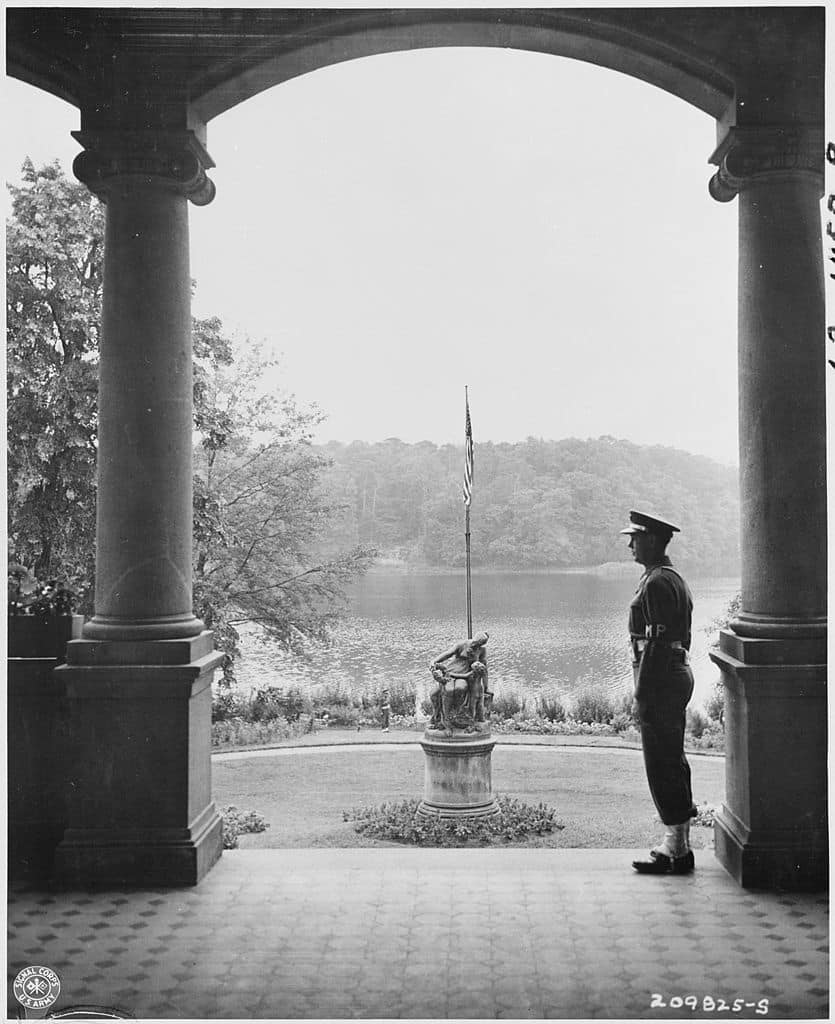
When Truman returned to the Little White House in Babelsberg around 7:00 PM that evening, he had two cables waiting for him. One was from longtime United States ambassador to Great Britain, John Winant who had written from London:
“Churchill has been defeated.”
Churchill’s opponent, Clement Attlee, was the new prime minister and hardly anyone in the American delegation could believe this stunning news.
Even the Soviets were shocked, especially Vyacheslav Molotov who seemed to be the most upset of all.
“How could this possibly be?” he continually demanded. “How could they not have known the outcome in advance?”
Although there is no official statement on record from Stalin, his response can be seen by his order to postpone the Potsdam Conference for another couple days; at the same time, he expressed his wishes to be seen by no one.
“First Roosevelt, now Churchill,” Truman recorded in his diary.
The old order was clearly passing and now it was only Stalin who was left – something of which was decidedly aware.
The other cable was the final draft of the Potsdam Declaration.
–
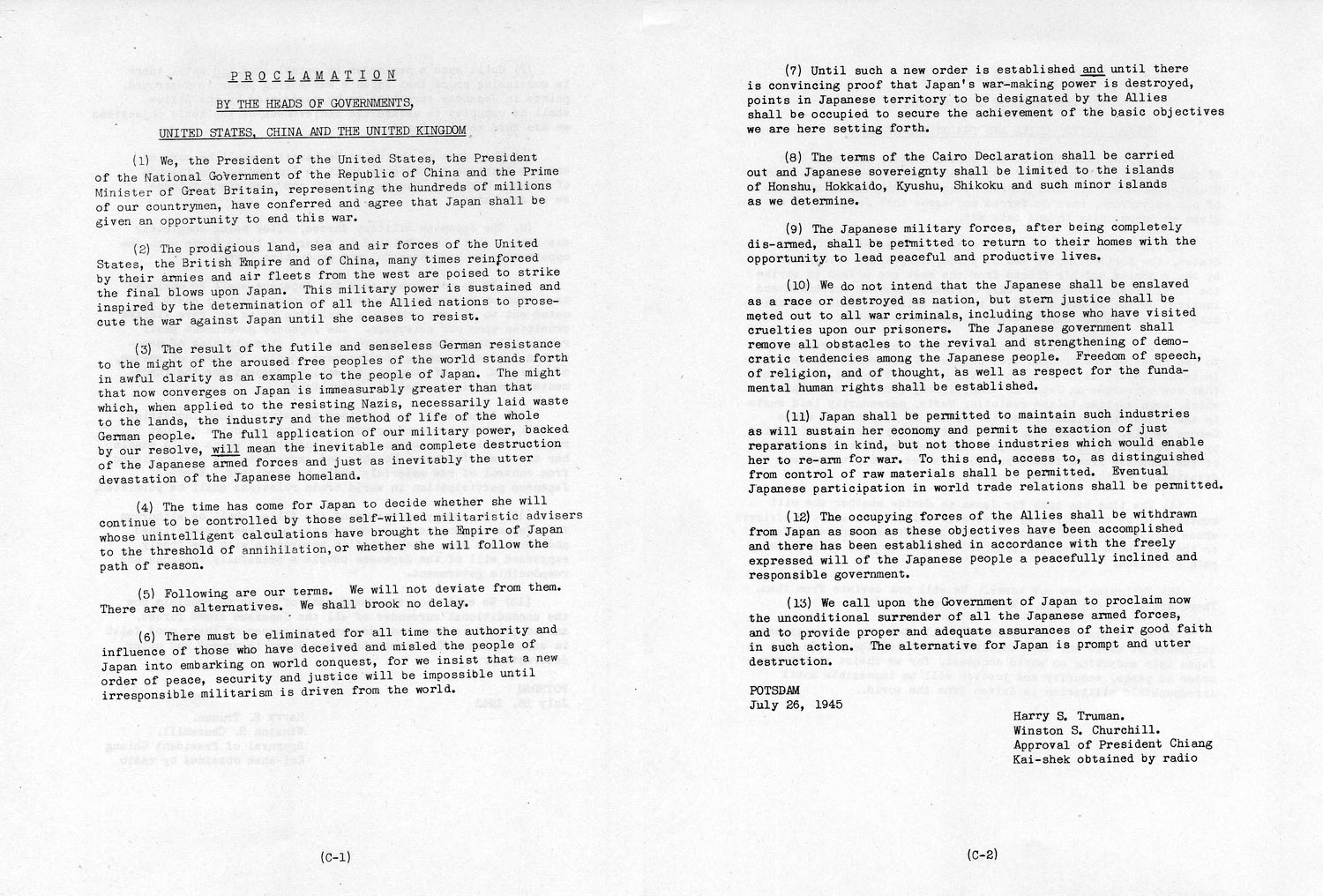
At 9:30pm Berlin time, the President’s Press Secretary and personal friend, Charlie Ross, handed the finalized version of the Potsdam Declaration to the press whose job it would now be to spread this document all the way to Tokyo.
“We the President of the United States, the President of the National Government of the Republic of China, and the Prime Minister of Great Britain, representing the hundreds of millions of our countrymen, have conferred and agree that Japan shall be given an opportunity to end this war,” it began.
*See below for the complete wording of the Potsdam Declaration*
After all the conditions were proclaimed, the declaration hit the hammer on the head with:
“We call upon the Government of Japan to proclaim now the unconditional surrender of all its armed forces, and to provide proper and adequate assurances of their good faith in such action. The alternative for Japan is prompt and utter destruction.”
Ross cabled his assistant back in Washington and informed him that President Truman’s wish was to get word to the Japanese people in every possible way. Soon, airplanes were flying over the mainland of Japan and dropping upwards of some 600,000 leaflets to the Japanese people below. The Potsdam Declaration would soon start to be heard over the radio and read about on the front pages of newspapers all across the globe the next morning.
At the ‘Little White House’ that evening, Truman tried to relax on his lakefront porch on Griebnitzsee. The President was exhausted and he knew that Stalin was going to be furious due to the fact that the Soviets had never been consulted on the Potsdam Declaration before it had been released. But up until this point, the Soviet Union had only pledged its future support in the war against Japan and thus had no legitimate authority to make any official demand since they were technically not at war with Japan.
At the same time that the ultimatum was being released to the press, Truman had a special messenger walk the Potsdam Declaration up the street to Stalin and Molotov.
Even though the plenary sessions would still be suspended for another day or so, the President was certain that he would be hearing from the Soviets the next morning.
–
*The Potsdam Declaration*
We-the President of the United States, the President of the National Government of the Republic of China, and the Prime Minister of Great Britain, representing the hundreds of millions of our countrymen, have conferred and agree that Japan shall be given an opportunity to end this war.
The prodigious land, sea and air forces of the United States, the British Empire and of China, many times reinforced by their armies and air fleets from the west, are poised to strike the final blows upon Japan. This military power is sustained and inspired by the determination of all the Allied Nations to prosecute the war against Japan until she ceases to resist.
The result of the futile and senseless German resistance to the might of the aroused free peoples of the world stands forth in awful clarity as an example to the people of Japan. The might that now converges on Japan is immeasurably greater than that which, when applied to the resisting Nazis, necessarily laid waste to the lands, the industry and the method of life of the whole German people. The full application of our military power, backed by our resolve, will mean the inevitable and complete destruction of the Japanese armed forces and just as inevitably the utter devastation of the Japanese homeland.
The time has come for Japan to decide whether she will continue to be controlled by those self-willed militaristic advisers whose unintelligent calculations have brought the Empire of Japan to the threshold of annihilation, or whether she will follow the path of reason.
Following are our terms. We will not deviate from them. There are no alternatives. We shall brook no delay.
There must be eliminated for all time the authority and influence of those who have deceived and misled the people of Japan into embarking on world conquest, for we insist that a new order of peace, security and justice will be impossible until irresponsible militarism is driven from the world.
Until such a new order is established and until there is convincing proof that Japan’s war-making power is destroyed, points in Japanese territory to be designated by the Allies shall be occupied to secure the achievement of the basic objectives we are here setting forth.
The terms of the Cairo Declaration shall be carried out and Japanese sovereignty shall be limited to the islands of Honshu, Hokkaido, Kyushu, Shikoku and such minor islands as we determine.
The Japanese military forces, after being completely disarmed, shall be permitted to return to their homes with the opportunity to lead peaceful and productive lives.
We do not intend that the Japanese shall be enslaved as a race or destroyed as a nation, but stern justice shall be meted out to all war criminals, including those who have visited cruelties upon our prisoners. The Japanese Government shall remove all obstacles to the revival and strengthening of democratic tendencies among the Japanese people. Freedom of speech, of religion, and of thought, as well as respect for the fundamental human rights shall be established.
Japan shall be permitted to maintain such industries as will sustain her economy and permit the exaction of just reparations in kind, but not those which would enable her to re-arm for war. To this end, access to, as distinguished from control of, raw materials shall be permitted. Eventual Japanese participation in world trade relations shall be permitted.
The occupying forces of the Allies shall be withdrawn from Japan as soon as these objectives have been accomplished and there has been established in accordance with the freely expressed will of the Japanese people a peacefully inclined and responsible government.
We call upon the government of Japan to proclaim now the unconditional surrender of all Japanese armed forces, and to provide proper and adequate assurances of their good faith in such action. The alternative for Japan is prompt and utter destruction.
**
Our Related Tours
To learn more about Potsdam and visit the site of the Potsdam Conference, have a look at our Royal Potsdam tours.
To learn more about the history of Cold War Berlin and life behind the Iron Curtain; have a look at our Republic Of Fear tours.
Bibliography
Byrnes, James (1947). Speaking Frankly. New York: Harper & Brothers. ISBN 978-0-837-17480-8
Cullough, David (1992). Truman. New York: Simon & Schuster. ISBN 978-0-671-86920-5
Fabian, Nadine. “Ein Besuch in der Stalin-Villa in Potsdam.” Märkische Allgemeine. 23 August 2017, https://www.maz-online.de/Lokales/Potsdam/Ein-Besuch-in-der-Stalin-Villa-in-Potsdam
Neiberg, Michael (2015). Potsdam: The End of World War II and the Remaking of Europe. New York: Basic Books. ISBN 978-0-465-07525-6
McBaime, Albert (2017). The Accidental President. New York: Houghton Mifflin Harcourt. ISBN 978-0-544-61734-6
Miscamble, Wilson D (1978). Anthony Eden and the Truman-Molotov Conversations, April 1945
Roberts, Geoffrey (2007). Stalin at the Tehran, Yalta, and Potsdam Conferences
Smyser, William (1999). From Yalta To Berlin: The Cold War Struggle Over Germany. New York: St. Martin’s Press. ISBN 0-312-06605-8
Sternberg, Jan. “Churchill und die lila Plüschmöbel.” Märkische Allgemeine. 13 July 2015, https://www.maz-online.de/Thema/Specials/P/Potsdamer-Konferenz/Villa-Urbig-am-Griebnitzsee.
Truman, Harry S. (1956). Memoirs: Year of Decisions Volume 1. New York: Doubleday.

